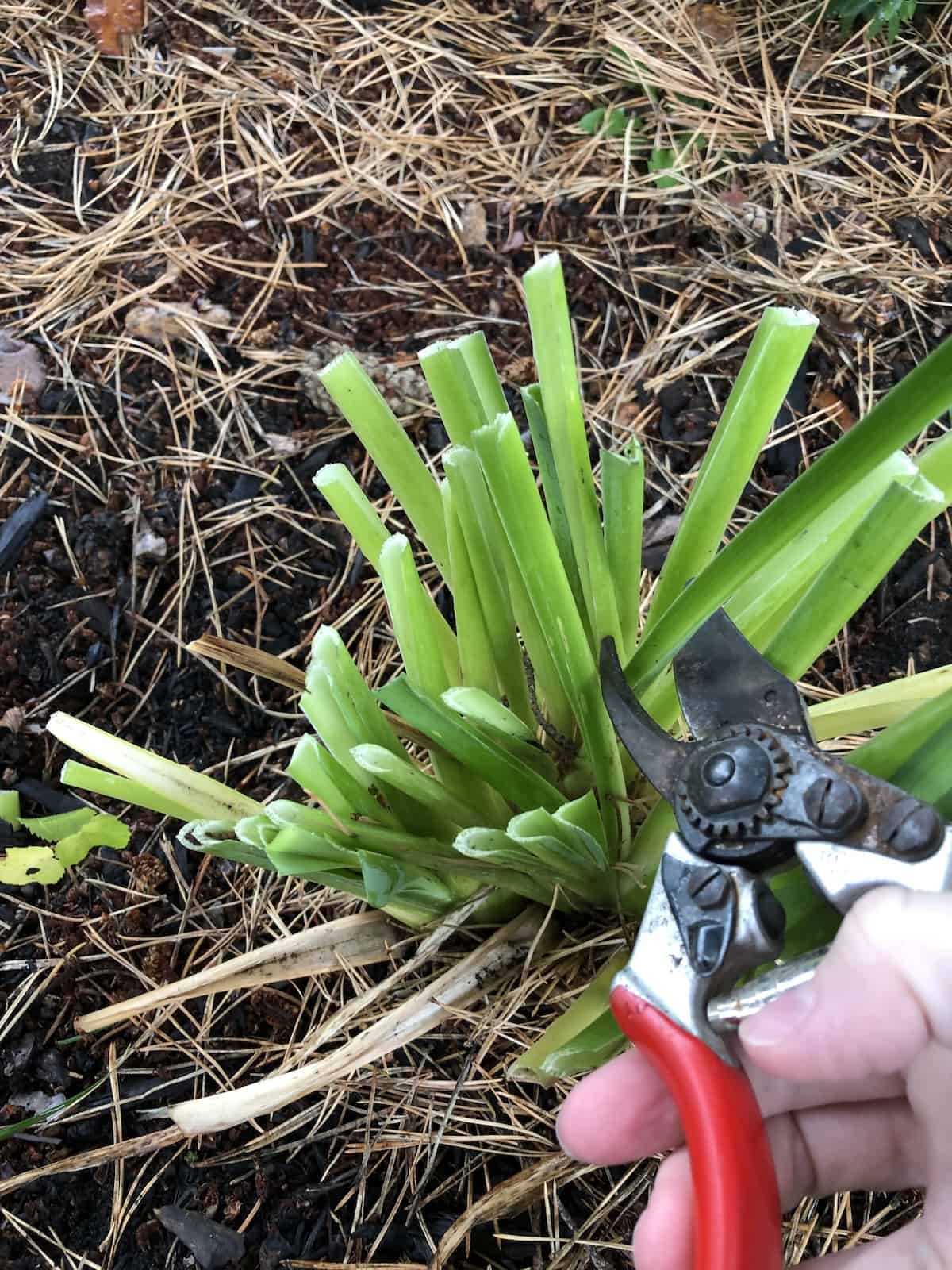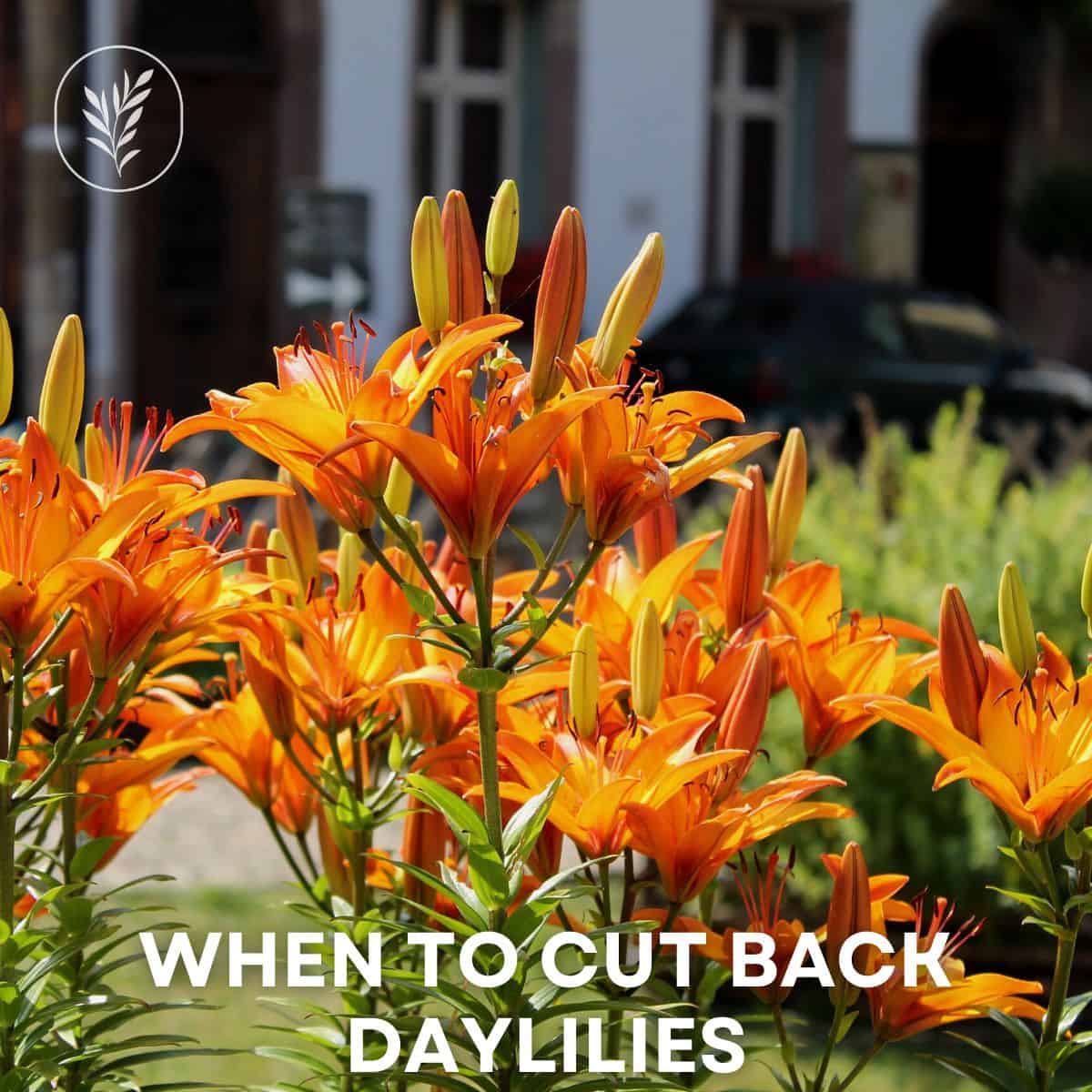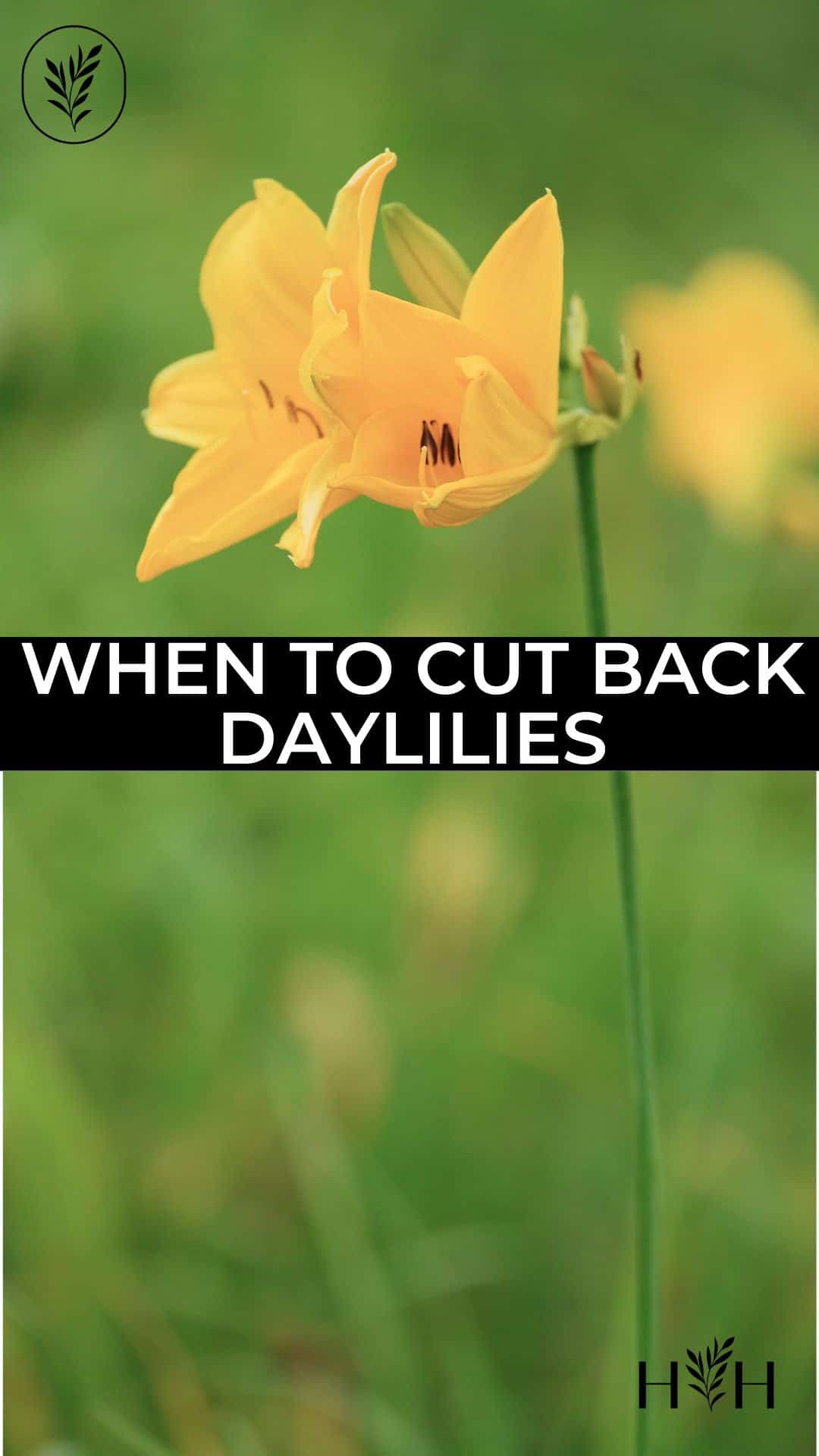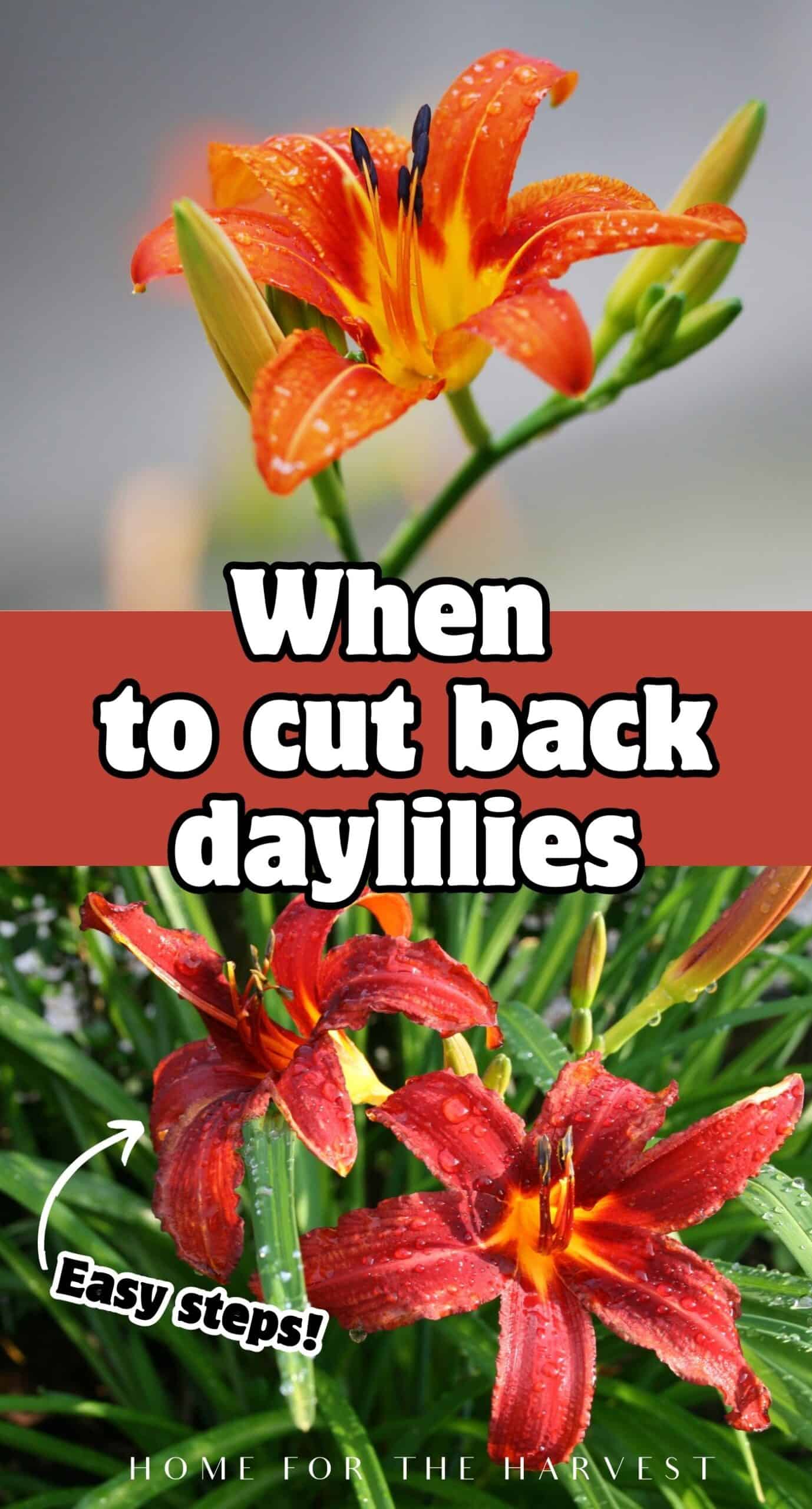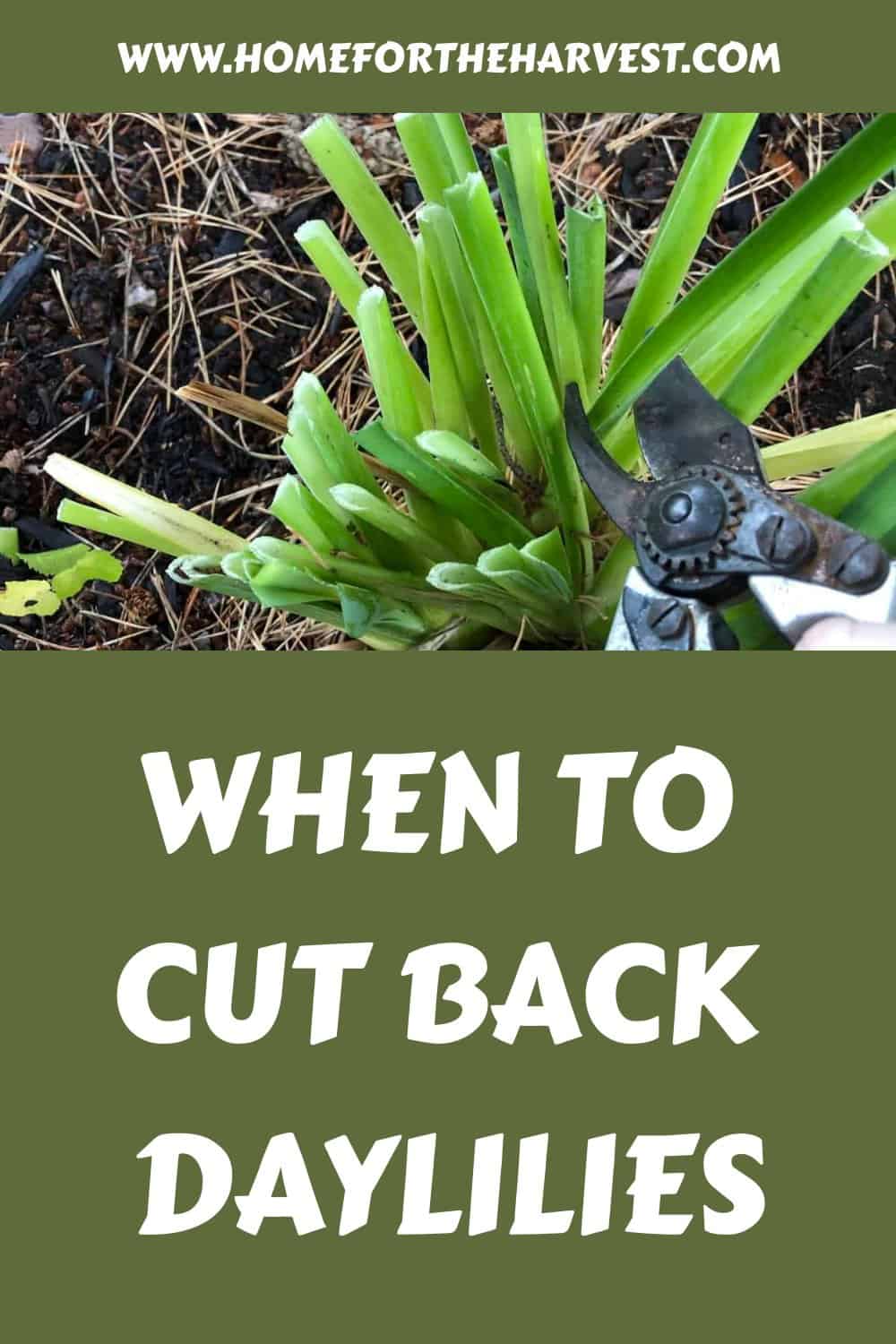Wondering when to cut back daylilies? Fortunately, these beautiful flowering perennials are quite forgiving and easy to care for!
You can cut back daylilies in mid-late autumn, but it is not strictly necessary. Cutting them back in the fall is easiest when the plant has started to die back naturally. The dead foliage is easy to brush off the crown of the plant and any green leaves can be trimmed off (here’s a video). If you leave it until the spring, just be sure not to damage any of the green spring shoots.
Read more about when to cut back daylilies below!
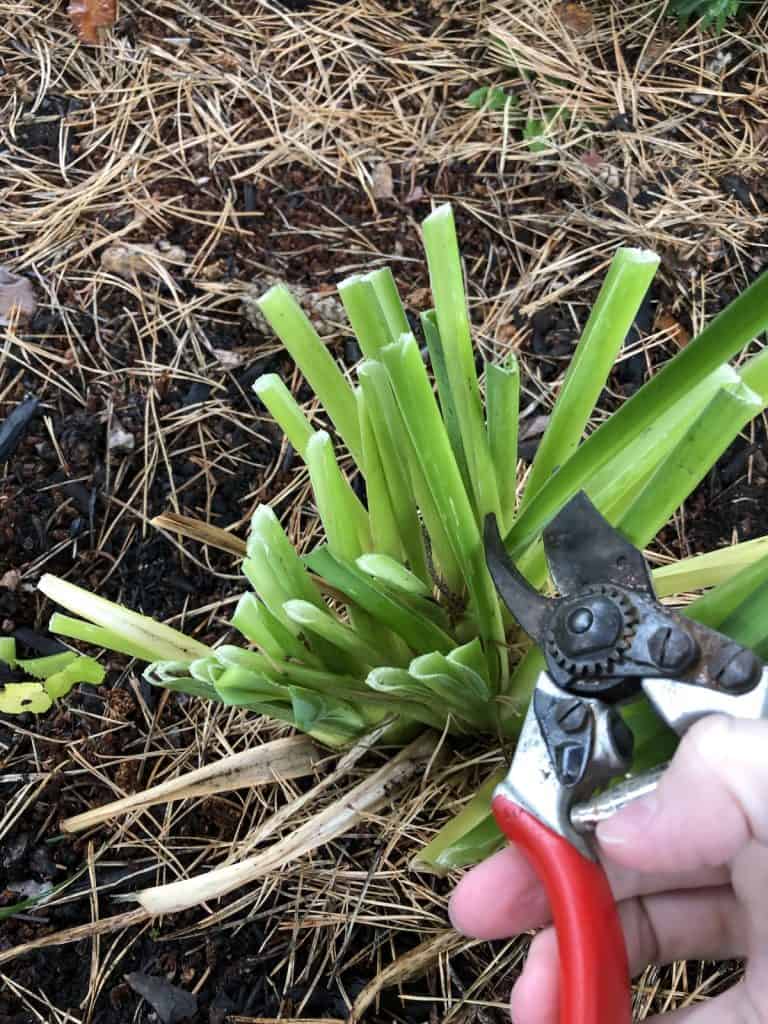
When to cut back daylilies?
Daylilies are best cut back in autumn, once the leaves have had a full growing season on the plant. While there are some evergreen types of daylilies, most are herbaceous, meaning that the leaves die back in the wintertime and sprout anew in the early spring.
Unless you’ve got one of the rarer evergreen types, it’s good to remove the dead foliage to keep the garden looking neat and discourage habitat for slugs and other pests.
How to cut back daylilies and other general upkeep: A guide
A common method used to prune daylilies is to cut the leaves back to a few inches tall once they’ve been hit with the first fall frost. Then the area around the cut stalks is mulched with homemade compost to add fertility for next year’s blooms.
Cutting back daylily plants is easiest with a pair of handheld pruning shears. These are my favorite ones to use:
- Felco Professional Handheld Pruners
- Fiskars Bypass Pruning Shears
- Garrett Wade Aluminum Bypass Pruners
Alternatively, leave the whole plant standing until the snow melts in the spring or until new growth appears in the springtime. Then carefully remove the dead foliage from the crown of the plants. A fresh 1″ layer of homemade compost around the plant will help it look great and give nutrition to its roots to enhance blooms!
If you prune daylilies back in the spring and then plan to mulch them, you can also take the opportunity to divide your daylilies. These perennial flowers will live for years without being divided, but dividing the roots is a great way to get more plants for free!
Another great time to divide the daylilies, is during late summer, once the flowers wilt.
Dig up the whole plant and carefully pull apart its tuber-like roots. Replant smaller amounts of the plant to have a whole garden full of daylily plants!
“A mulch of old manure, straw, compost or leaves keeps up fertility and reduces maintenance to near zero; it is not even necessary to cut away foliage in fall. During winter, let it lie where it falls (unless you are bothered by slugs), and new shoots will push through the tangle come spring.”
The Harrowsmith Perennial Garden: Flowers for Three Seasons, by Patrick Lima
Other than cutting back the daylilies, there is other general upkeep required. The daylily’s dead flowers typically fall off on their own but should be removed if they remain attached. This process is called deadheading.
Deadheading daylilies involve trimming the spent blooms, flower stalks, and dead leaves of the daylily during the late summer as they wilt. The wilted daylily flowers and dead leaves can be used as compost or garden waste.
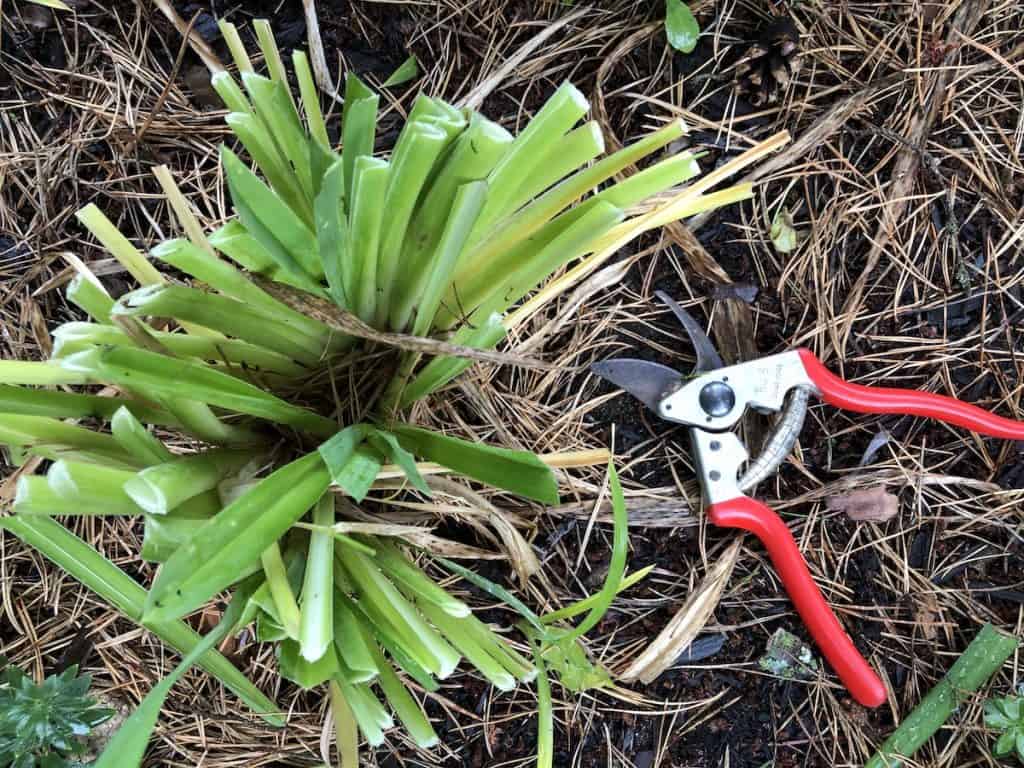
Why leave foliage standing until autumn?
While you can cut daylilies back in the fall or in the spring, it’s important to let the leaves stay on the plant through the summer. The leaves of the plant are essential equipment for creating energy and you need to take care of them in order to ensure blooming daylilies in the future.
Let all healthy leaves remain on the plant throughout the growing season so they can produce energy that will be stored in the roots over winter.
Without leaves in the sunlight during the summer, a daylily plant will have a hard time surviving winter and then putting on blooms next summer.
Remove any leaves that are damaged or diseased, but try to leave the healthy ones attached until they’re killed by freezing weather (or there is at least freezing weather in the weather forecast!).
“Evergreen daylilies (cultivars that maintain foliage year-round) tend to be the best choices for hot-climate gardens. Dormant daylilies have foliage that dies down in fall prior to winter dormancy and usually are the best choices for cold-climate regions”
Essential Perennials: The Complete Reference to 2700 Perennials for the Home Garden, by Ruth Rogers Clausen and Thomas Christopher
Daylilies aren’t the only perennial flower that needs to have their foliage left on the plant until it dies back naturally.
Most spring-flowering cottage garden plants have leaves for much longer than flowers, and although it can be tempting to cut them back, it’s important for their energy production to have their leaves as long as possible. Wait until the leaves of iris, peony, tulips, and other long-lived plants die back to the ground on their own prior to removing the foliage from the garden.


